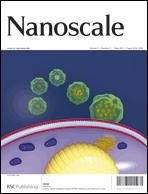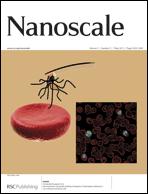Scientists from Singapore report the development of a nanoparticle-based drug delivery vehicle that is capable of releasing drugs upon external stimuli.
They have made amphiphilic polymer coated gold nanoparticles which self-assemble into vesicles. The hydrophobic polymer on the gold nanoparticle surface can be converted to a hydrophilic polymer by UV light illumination, creating a mechanism to monitor drug release. By examining the gold nanostructure surface plasmon band shifts (and for drugs that happen to be fluorescent), the release profile can be controlled and monitored in real time.
The team investigate the loading and photo-regulated release of the fluorescent model drug, doxorubicin (DOX), by the plasmonic vesicles. DOX as a potent anticancer drug suffers from side effects such as cardiac toxicity, and therefore drug delivery systems that allow the targeted delivery of DOX are highly desirable.
Read the full details of this HOT Nanoscale article:
Photolabile plasmonic vesicles assembled from amphiphilic gold nanoparticles for remote-controlled traceable drug delivery
Jibin Song, Zheng Fang, Chenxu Wang, Jiajing Zhou, Bo Duan, Lu Pu and Hongwei Duan
DOI: 10.1039/C3NR01350B











 Scientists from Taiwan and Germany report a strong magnetic enhancement in self-assembled multiferroic-ferrimagnetic nanostructures in
Scientists from Taiwan and Germany report a strong magnetic enhancement in self-assembled multiferroic-ferrimagnetic nanostructures in  Jong Hak Kim and co-workers from Yonsei University report very impressive quasi-solid-state dye-sensitized solar cell (DSSC) efficiencies in
Jong Hak Kim and co-workers from Yonsei University report very impressive quasi-solid-state dye-sensitized solar cell (DSSC) efficiencies in 


 Scientists from Tsinghua University in China have found a way to synthesis water soluble nanocrystals with sizes smaller than 10nm using a formamide solvent-system.
Scientists from Tsinghua University in China have found a way to synthesis water soluble nanocrystals with sizes smaller than 10nm using a formamide solvent-system.